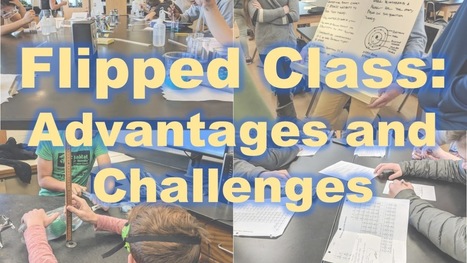The flipped classroom originated in Colorado when two Chemistry teachers, Jon Bergmann and Aaron Sams, started recording lectures for students to watch at home. They were driven to increase interaction with students when they seem to need it most, during homework. So, they flipped the traditional classroom structure; students watched the lecture at home and then completed homework under the guidance of their teacher during class. Bergmann and Sams reported increased assessment scores in the first year of its implementation1, and the model quickly became popular.
Research and publish the best content.
Get Started for FREE
Sign up with Facebook Sign up with X
I don't have a Facebook or a X account
Already have an account: Login
Literacy in a digital education world and peripheral issues.
Curated by
Elizabeth E Charles
 Your new post is loading... Your new post is loading...
 Your new post is loading... Your new post is loading...
|
|











